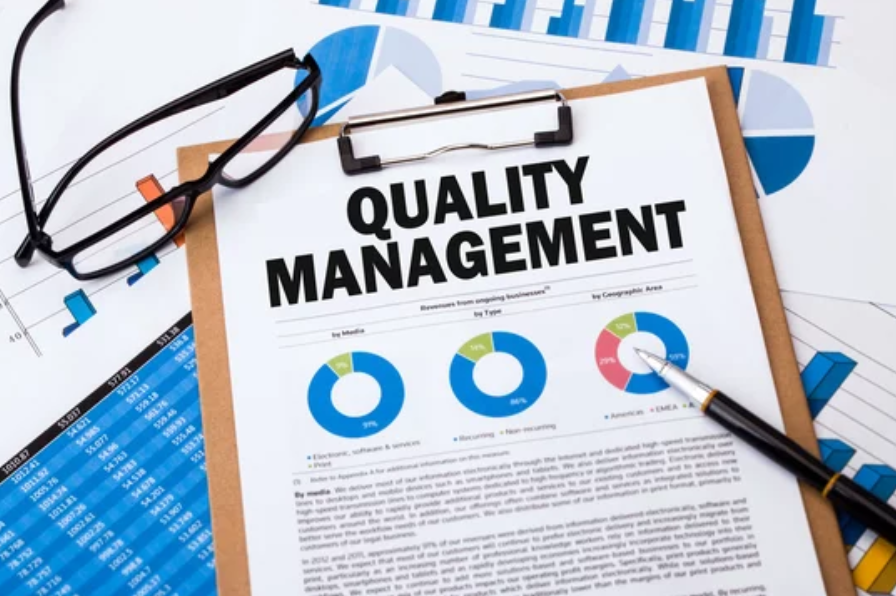How to establish a QMS
QMS (Quality Management System) is a “framework” for quality management.
It is usually created in a top-down manner with a hierarchical structure.
first level:Quality Manual Tier 2: Provisions
third level:Standard Operating Procedures (SOPs)
Fourth Level:Outline, Form
and four tiers are standard.
Often companies include records in their QMS, but strictly speaking records are not QMS. Because it is not a “mechanism.” “The record is the result of executing the “mechanism”.
Although records are a type of document, the way they are managed differs from documents.
 |
Quality Manual
The quality manual must be preparedmust be.
The quality manual will include a “quality policy” and will include senior management’s quality commitments to be listed.
The reason why quality manuals differ from company to company for the same regulatory requirement is that the products (e.g., sterile preparations, gastrointestinal drugs, anticancer drugs, etc.) manufactured by the company in question are different and the processes (e.g., manufacturing processes, storage processes, sterilization processes, testing processes, etc.) implemented by the company in question are different.
Different products carry different risks. Therefore, the degree of quality control differs.
When an FDA inspection is conducted, the Quality Manual may be requested to be translated into English and sent to the company in advance.
This is because FDA inspectors must understand in advance what products the company manufactures and sells, what processes it is responsible for, and the degree of quality control and commitment to quality by senior management.
Documents under the second level of regulations shall be prepared by employees in accordance with the Quality Manual.
The key here is compliance with the quality manual, not direct compliance with regulatory requirements .
What employees refer to and comply with are not regulatory requirements, but quality manuals.
When I have conducted consultations and audits at pharmaceutical and medical device companies, I have often found that quality manuals and regulations/procedures are not consistent with each other.
This is because many Japanese companies build their QMS from the bottom up, not from the top down.
The method of establishing a QMS in Europe and the U.S. is top-down. Japanese companies are extremely poor at the top-down approach.
When the author points out inconsistencies between the quality manual and regulations, procedures, etc., he is often met with the response, “The quality manual does not state this, but it is required by regulatory requirements.” The author sometimes receives the response, “It is not mentioned in the quality manual, but it is required by regulatory requirements.
In this case, the quality manual is “just a picture.
Even if FDA inspectors and others read the quality manual in advance, they would not be able to understand an overview of the quality management of the company in question.
Provisions
The second level of regulations will contain rules for the matters described in the quality manual.
It goes without saying that rules must comply with regulatory requirements.
FDA inspections, for example, often refer to rules rather than procedures. This is because while there is no right or wrong procedure, it is clear whether or not the rules comply with regulatory requirements.
Standard Operating Procedures (SOPs)
The third level of procedures should include “standard procedures“.
A “standard” is one that does not vary from item to item or from production building to production building.
Often, we see SOPs for each item or each manufacturing building, but this makes the However, this means that the “standard” of the company in question is unknown and inconsistencies can occur.
If there are different procedures for each item or manufacturing building, they can be dropped into a fourth-level procedure or form (e.g., manufacturing instructions and records).
Normally, workers do not bring SOPs to the work site. However, they will bring forms to create records.
Therefore, it makes no sense to describe different procedures for each item or each manufacturing building in SOPs. Instead, it will only unnecessarily increase the number of SOPs and make them more complex.
It also increases the time and effort required to revise SOPs.
A procedure document must be able to draw a flowchart. Conversely, what cannot be flowcharted is not a procedure, but a rule.
For example, “Password must be at least 6 characters.” and so on.
When rules and detailed procedures are described in procedure manuals, they are difficult to read, understand, and change.
Basically, one process should = one procedure.
This is because building a procedure manual for each process makes it easier to understand and maintain.
Outline, Form
The fourth level of procedures and forms should include “detailed procedure“.
Basically, one process = one manufacturing instruction and record. This is because there is no point in bringing a manufacturing instruction and record that you do not work on to the manufacturing site.
The goal is that if the work is performed in compliance with the guidelines and forms and records are prepared, the standard procedures can be followed, the regulations can be followed, and the quality manual can be followed (no deviations). In other words, regulatory requirements can be complied with.
And it’s not just about being able to comply with regulatory requirements, Data Integrity violations.
As mentioned above, Japanese companies are not accustomed to building a QMS using a top-down approach.
As a result, many companies have a QMS system that is complex, complicated, difficult to understand, and very numerous.
In other words, there is a disarray of similar and dissimilar documents.
related product
[blogcard url=https://xn--2lwu4a.jp/qms-rx/ title=”QMS(手順書)ひな形 医薬品関連” ] [blogcard url= https://ecompliance.co.jp/SHOP/EL-006.html title=”【セミナービデオ】データインテグリティSOP作成セミナー”] [blogcard url= https://ecompliance.co.jp/SHOP/P139.html title=”【書籍】 当局要求をふまえた データインテグリティ手順書作成の要点”] [blogcard url= https://ecompliance.co.jp/SHOP/O089.html title=”【VOD】データインテグリティの具体的な手順書作成セミナー 【データインテグリティ書籍付】”] [blogcard url= https://ecompliance.co.jp/SHOP/MD-QMS-01.html title=”【FDA CFR 820 QSR対応】品質マニュアル”]]]>


Comment